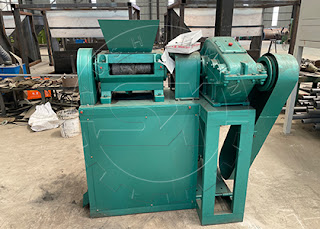What kinds of granulating machines can be used in the granular fertilizer production plants?
At present, the use of organic waste to produce organic fertilizer through biological fermentation has been rapidly developed in my country, because it can realize the harmless and resourceful treatment of organic waste. However, most of the organic fertilizers obtained by biological fermentation are in the form of coarse powder or irregular small pieces, which are very inconvenient to use, especially unfavorable for large-area machine-sowing. The following content shows how to use powdery material into spherical granular organic fertilizer.
1. Some manufacturers use ttraditional disc pelletizer or drum granulation machine, and need to dry coarse powder or irregular small pieces of organic fertilizer (moisture <15%) and pulverize it into very fine (more than 100 mesh) powder , and then add binder and inorganic fertilizer, and the amount of binder and inorganic fertilizer added in the organic fertilizer cannot be greater than 30%. Although this method can be made into spherical particles, because the organic fertilizer in the processing process will be first sufficient precipitation is crushed, water is added to granulate and then dried, repeated many times, so the processing cost is quite high, and due to the low density of organic fertilizer, the particle strength is low, which is not conducive to storage, transportation and machine sowing.
2. There are also some manufacturers who first dry the coarse powder or irregular small pieces of organic fertilizer to a moisture content of only 20-25%, and then use a flat die extrusion granulator or a counter-roll extrusion granulator to dry the fertilizer. The organic fertilizer is extruded into columnar or flat spherical particles. Although this method is more convenient to use, the fluidity is not very good, it is not suitable for machine sowing, and the appearance is poor and the appearance is not good.
3. There are also some manufacturers who extrude coarse powder or irregular small pieces of organic fertilizer into short columnar particles with a flat die extrusion granulator (due to high moisture and high fiber content, the columnar particles also have certain characteristics. Plasticity), then polished and formed into spherical particles, and then the spherical particles are dried, cooled and screened to obtain qualified particles. This method does not require treatment of raw materials, the order of moisture is reduced, and the production cost is greatly reduced, but this method also has some fatal. The weakness is that the organic fertilizer is easy to be arched, easy to block and easy to bond equipment, and at the same time, the output is small and the power consumption of the extrusion process is high.
Therefore, in summary, the use of collision granulator to produce organic granular fertilizer has the advantages of low production cost, uniform product particle size, high strength, good fluidity, favorable for long-term storage and transportation, and suitable for machine sowing. That is to say, the performance of the products produced in this way is very good.
You can also visit the following content to know more machine made by FFM factory.



Comments
Post a Comment